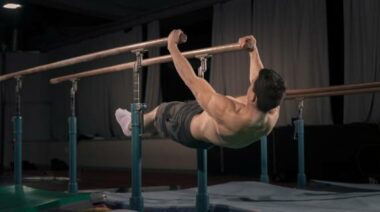Apparently, it is common knowledge that adults whose index finger is shorter than their ring finger were exposed to greater amounts of testosterone when they were in the womb. Carl Pintzka, a medical doctor and researcher at the Norwegian Competence Service for Functional MRI, believes that both men and women with this characteristic are likely to have better spatial recognition skills as adults and have better better physical and athletic abilities. They are, also, more likely to have ADHD and Tourette’s syndrome interestingly enough.
So, why does finger size, or testosterone exposure in the womb, have this effect? In his doctoral dissertation at NTNU, Pintzka investigated1 how the brain functions differently in women and men. As part of this study, he tested an established theory about the significance of finger length and how the brain works. He measured the finger length of 42 women and gave half of them a drop of testosterone. The other half were given a placebo. Afterwards, the women had to solve various mental tasks.
“One mechanism behind this relationship is the difference in the receptor density for estrogen and testosterone in the various fingers in utero. This relationship has also been shown to remain relatively stable after birth, which implies that it’s strictly the foetal hormone balance that determines this ratio,” says Pintzka.
“The greatest effect has been found for various physical and athletic measures, where high levels of prenatal testosterone are consistently linked with better capabilities,” Pintzka says. “Beyond this we find a number of uncertain results, but a general feature is that high levels of testosterone generally correlate with superior abilities on tasks that men usually perform better, such as various spatial tasks like directional sense,” he adds.
Pintzka says studies show that high levels of testosterone in utero correlate with an increased risk of developing diseases that are more common in men, such as ADHD, Tourette’s and autism. Low levels of testosterone are associated with an increased risk of developing diseases that are more common in women, like anxiety and depression.
Researchers used a common photocopy machine to measure the lengths of the index and ring fingers of 42 women. Half of these women were asked to solve different mental tasks after they had been given a drop of testosterone on their tongue. The goal was to determine the differences in how men’s and women’s brains work, and the significance of finger length and testosterone levels. (Source: Carl Pintzka / Kolbjørn Skarpnes, NTNU).
His study primarily involved researching how testosterone affects different spatial abilities in women. The women were asked to navigate a virtual maze, and to mentally rotate different three-dimensional objects.
Pintzka believes that a larger study would be able to show a significant correlation. Furthermore, the results suggest that these hormone levels are important both in utero and in adulthood. In other words, no definite conclusions can be drawn quite yet.
Personally, we’d like to see a lot more research on the direct relationship between spatial awareness and athletic ability. Attention, Visual Perception and their Relationship to Sport Performance in Fencing is a research study from 2013 that does a good job of making the connection, even if it is very specific to one sport, for those of you interested in further reading and investigation into the matter.
Reference
1. Carl W.S. Pintzka, Hallvard R. Evensmoen, Hanne Lehn, Asta K. Håberg. Changes in spatial cognition and brain activity after a single dose of testosterone in healthy women. Behavioural Brain Research, 2016.






